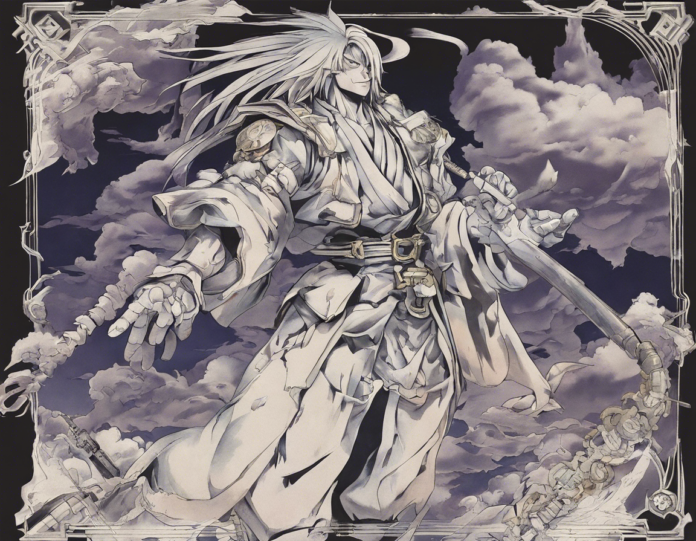Japanese Urban Legends – The Eerie Mysteries of Toshi Densetsu
Introduction
Urban legends have long been a fascinating aspect of folklore, encompassing stories passed down through generations that captivate our minds with tales of the supernatural, mysterious, and inexplicable. Toshi Densetsu, a term originating from Japan, translates to “city legends” or “urban legends” and is deeply rooted in Japanese culture. These legends often involve ghostly encounters, malevolent spirits, cursed objects, and other paranormal phenomena that send chills down the spines of those who hear them.
The Origins of Toshi Densetsu
Toshi Densetsu has its origins in the Edo period (1603-1868), a time of social, political, and cultural upheaval in Japan. During this period, a variety of supernatural beliefs and traditions flourished, leading to the creation of countless urban legends that continue to intrigue and terrify people to this day. These legends have been passed down through oral storytelling, literature, and now, the digital age, where they find new life in the form of internet forums and social media.
Popular Toshi Densetsu
-
Teke Teke: One of the most infamous Japanese urban legends, Teke Teke is the ghost of a young woman who was cut in half by a train and now roams the streets, dragging her upper body with her arms while making a distinct “teke teke” sound. Those who encounter her are said to face a gruesome fate akin to hers.
-
Kuchisake-onna: The legend of the slit-mouthed woman, Kuchisake-onna, tells the story of a disfigured spirit who wears a mask and approaches unsuspecting victims at night, asking them if they think she is beautiful. Depending on their answer, she either rewards them or mutilates them with a pair of scissors.
-
Hanako-san: A well-known urban legend among schoolchildren, Hanako-san is said to be the ghost of a young girl who haunts the third stall of the third-floor girls’ bathroom. Those who summon her by knocking on the stall door are met with a ghostly presence.
The Influence of Toshi Densetsu
Japanese urban legends have had a profound impact on popular culture, inspiring numerous films, television shows, manga, and video games. The eerie and macabre nature of these tales resonates with audiences worldwide, leading to their adaptation and reinterpretation in various mediums. Films like “The Ring” and “Ju-On: The Grudge” draw inspiration from Japanese urban legends, showcasing their enduring appeal and ability to evoke fear and suspense.
Common Themes in Toshi Densetsu
-
Vengeful Spirits: Many Toshi Densetsu revolve around vengeful spirits seeking retribution for past injustices or tragic events that befell them during their lifetime.
-
Cursed Objects: Objects imbued with supernatural powers or curses feature prominently in Japanese urban legends, often bringing misfortune or death to those who come into contact with them.
-
Hauntings: Tales of haunted locations, such as schools, hospitals, and abandoned buildings, are a common motif in Toshi Densetsu, with restless spirits tormenting those who dare to enter their realm.
The Evolution of Toshi Densetsu in the Digital Age
With the advent of the internet and social media, Japanese urban legends have found a new platform for dissemination and exploration. Online forums, websites, and social networking sites have facilitated the sharing of Toshi Densetsu among a global audience, leading to the creation of communities dedicated to discussing, analyzing, and expanding upon these chilling tales.
FAQs – Unraveling the Mysteries of Toshi Densetsu
-
Are Toshi Densetsu based on true events?
While many urban legends draw inspiration from historical events or cultural beliefs, their veracity is often questioned. Toshi Densetsu are primarily seen as fictional tales passed down through generations to entertain, frighten, or impart moral lessons. -
Why are Japanese urban legends so popular?
Japanese urban legends resonate with audiences due to their eerie and supernatural themes, captivating storytelling, and cultural significance. The blend of folklore, horror, and mystery in Toshi Densetsu creates a unique and compelling narrative that continues to fascinate people worldwide. -
What role do Toshi Densetsu play in Japanese culture today?
Japanese urban legends are deeply ingrained in the cultural fabric of Japan, influencing media, art, literature, and even tourism. These legends serve as a creative outlet for exploring societal fears, superstitions, and the unknown, reflecting both the past and present attitudes towards the supernatural. -
How do Toshi Densetsu differ from Western urban legends?
While Western urban legends also encompass tales of ghosts, monsters, and supernatural phenomena, Toshi Densetsu often feature distinct cultural elements, such as yokai (Japanese spirits), onryo (vengeful spirits), and specific rituals or locations unique to Japanese folklore. -
What impact have Toshi Densetsu had on popular culture?
Japanese urban legends have inspired a wide range of media, including films, anime, manga, video games, and literature. The popularity of Toshi Densetsu in popular culture highlights their enduring appeal and ability to evoke fear, suspense, and intrigue among audiences worldwide.
Conclusion
Toshi Densetsu represents a captivating and chilling world of Japanese urban legends that continue to enthrall and terrify audiences with their tales of the supernatural, paranormal, and macabre. These stories offer a glimpse into the rich cultural heritage of Japan, blending folklore, tradition, and modern storytelling to create a tapestry of eerie mysteries that linger in the collective imagination. As long as there are dark corners, abandoned buildings, and shadowy alleys, the legends of Toshi Densetsu will endure, captivating all who dare to delve into their haunting narratives.





